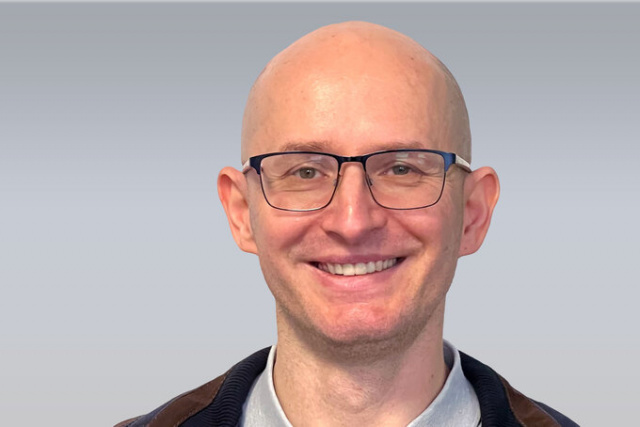Featured Lendület Member: Gábor Juhász
The healthy functioning of cells is inconceivable without the digestion and breakdown of defective or redundant materials or substances that have been absorbed. If this system does not function properly, it can have a number of pathological consequences. These cellular breakdown processes are carried out by membrane-lined vesicles called lysosomes. They are investigated by Gábor Juhász, Scientific Advisor of the Institute of Genetics at the Szeged Biological Research Centre and Head of the Lysosomal Degradation Research Group, with the support of the Hungarian Academy of Sciences’ Lendület Programme.
Gábor Juhász has spent his entire scientific career studying autophagy, the self-digestive processes of cells. Damage occurs in every cell: cell organelles and proteins, as well as other macromolecules, are damaged. It is therefore necessary for the cell to be able to continuously break down and recycle harmful substances. These recycling processes take place continuously in all eukaryotic cells. When the cell is stressed (e.g. by starvation) or produces proteins with defective structures, autophagy can become quite intense.
 Gábor Juhász
Gábor JuhászHarmful proteins or even defective mitochondria need to be broken down as soon as possible to cause disruption for as short a time as possible, while in starvation the cell meets its nutritional needs by breaking down its own material. The focus of Juhász’s research group has shifted slightly over the past ten years: in addition to studying autophagic self-digestion, they have also begun to investigate other lysosome-related degradative processes. One such process is endocytosis, during which the cell takes up its receptors in the plasma membrane and the molecules (cargo), such as ligands, that bind to them.
Degradative processes
Depending on the size of the cargo, this process is called endocytosis or phagocytosis. It is related to crinophagy, where the secretory cell does not secrete the secretory granules into the environment but breaks them down by lysosomes. This may seem surprising at first sight, but Gábor Juhász suggests that this may be a quality control step: the cell recycles the too old vesicles instead of secreting them.
“Our research group has pioneered the discovery of factors mediating the maturation of the autophagy-derived vesicles (autophagosomes) that carry the material to be degraded,”
says Juhász. “This has directed our attention towards similar degradative processes, since we can discover significant overlap in the molecular mechanisms underlying these processes, while specific factors are of course also present.”
The research team has created the first genetically testable model to study crinophagy and described the first factors affecting it. In the process, researchers have increasingly turned their attention to lysosomes. Lysosomes can be extremely diverse, as they can harbour a wide variety of cargo. Organisms are made up of a large number of cell types, and these cells specialise in different tasks. For this reason, very different substances can get into their lysosomes. Not all cells are able to phagocytose, for example, or they cannot phagocytose all substances. In neural tissue, for example, only glial cells can take up particles from their environment, neurons cannot. One of the discoveries of the research team is related to this: they described that axons (i.e. fragments of nerve cell extensions) that disintegrate in the damaged nervous system are phagocytosed by glial cells, and during that time some of the autophagic proteins are not used in the maturation of the autophagosomes that transport their own substances, but in the maturation of the phagosomes that transport taken-up cellular debris.
Although lysosomes are commonly thought of as acidic cellular organelles with hydrolytic enzymes operating in an acidic medium, in reality not all lysosomes are acidic. Their pH is related to the amount of cargo that enters the lysosome. This is logical, because maintaining the acidic chemistry of the lysosome requires a lot of energy, and if there is nothing to digest, it would be a waste of energy for the cell. This phenomenon is very striking in the tissues of fast-growing animals, such as the larval adipose tissue of fruit flies, which increases two hundredfold in mass in four days. Meanwhile, it typically does not break down its own material, as it is fast and almost unstoppable in its growth. However, starving the larva triggers a very strong autophagic response in the adipose tissue (as storage tissue), which requires the acidification and activation of lysosomes. In other words, the cells are able to change their lysosomal activity depending on the circumstances, in particular the incoming cargo to be degraded.
“One of the main objectives of the Lendület (Momentum) project is to understand the background of this activity change,”
says Juhász. “We are investigating a step of autophagosome-lysosome fusion involving the previously discovered syntaxin 17 protein. We have shown that if we inhibit the fusion of autophagosomes and lysosomes, the lifespan of the animal is greatly shortened because the neurons cannot function properly and the animal becomes immobile.”
The step where the protein “crawls into the membrane”
Although the syntaxin 17 protein is found in membranes, interestingly, syntaxin 17 molecules from the cell’s cytosol are recruited to the autophagosome. It is very unusual for a protein to be present in both the membrane and the cytosol. The researchers are also using biochemical and biophysical methods to investigate the step where the protein “crawls into the membrane”. This could help to better understand the mechanism of fusion of the autophagosome and lysosome.
Drosophila and human versions of the syntaxin 17 protein have already been produced in recombinant form and are stable in solution. And when artificial lysosomes are added to these soluble proteins, the proteins are spontaneously recruited to the surface of the lysosomes. The phospholipids that need to be present on the surface of the lysosome for this to happen have also been explored. In human cells, it has been shown that inhibiting the formation of these phospholipids also prevents the recruitment of proteins to the autophagosome, so that autophagosome-lysosome fusion cannot proceed properly. The next big step forward would be to determine the structure of syntaxin 17. This would allow them to deduce how the protein attaches to the membrane: whether it just sticks to the surface or whether it actually crawls into the membrane completely.
Another objective of the project is to map the heterogeneity of lysosomes.
The diversity of lysosomes is unmatched by any other cellular organelle. The molecular composition of lysosomes with different parameters will be investigated. According to Juhász, by studying compositional characteristics, we can understand the role of lysosome constituent factors in activity. Some of the experiments will be carried out on human cells, but will mainly rely on the well-known model animal, the fruit fly (Drosophila melanogaster), where the focus will be on lysosomal activity and the composition of glial and neuronal cells in brain tissue. There is a huge difference in the degradative processes of the two cell types, as glia are capable of phagocytosis, whereas neurons are not. Their differences in function have a fundamental impact on the functioning of the whole nervous tissue, so the objectives of the second half of the project are of great importance in the field of physiology.




